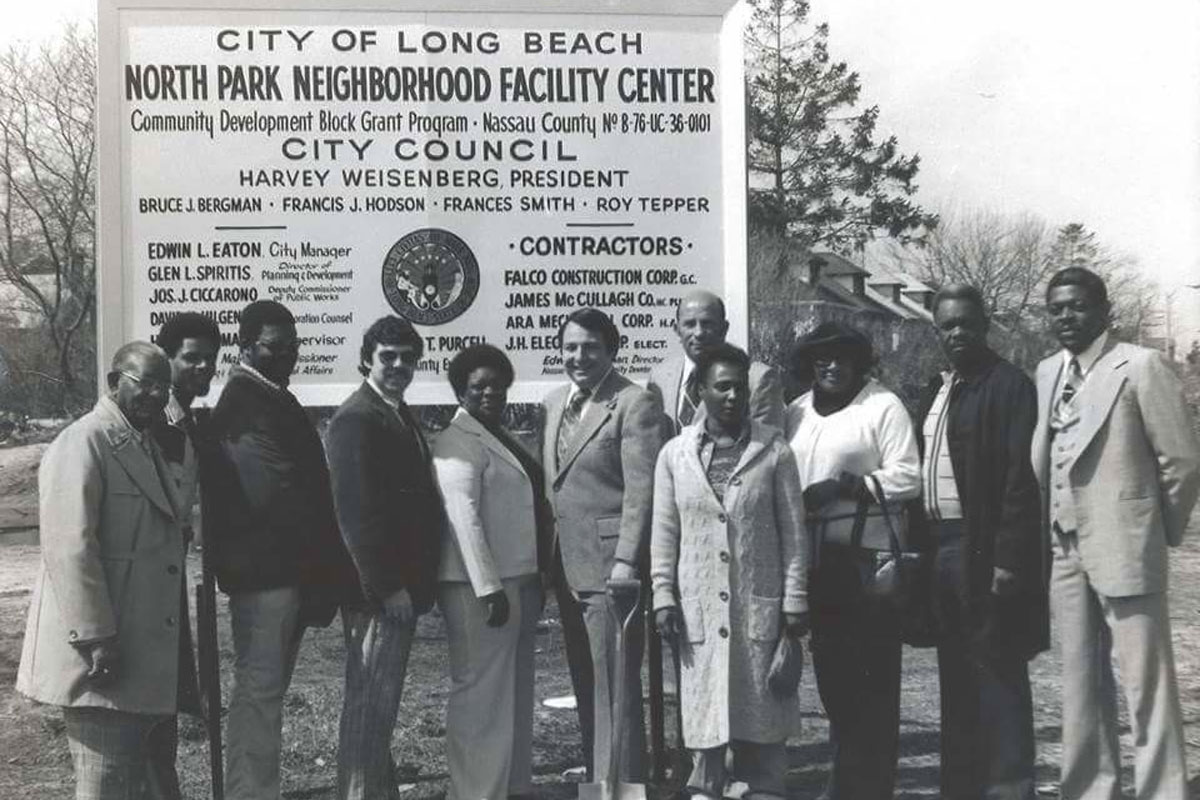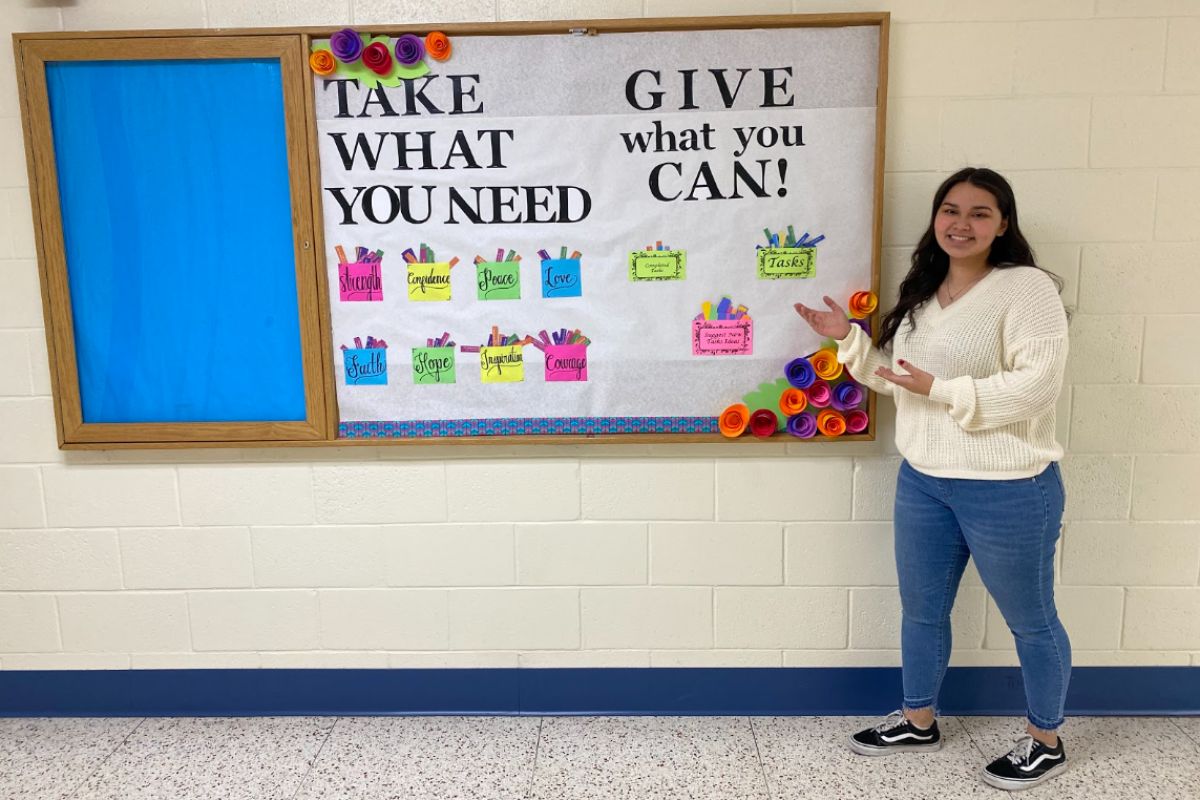Building a Youth Leadership Program: The Woodside High School Story
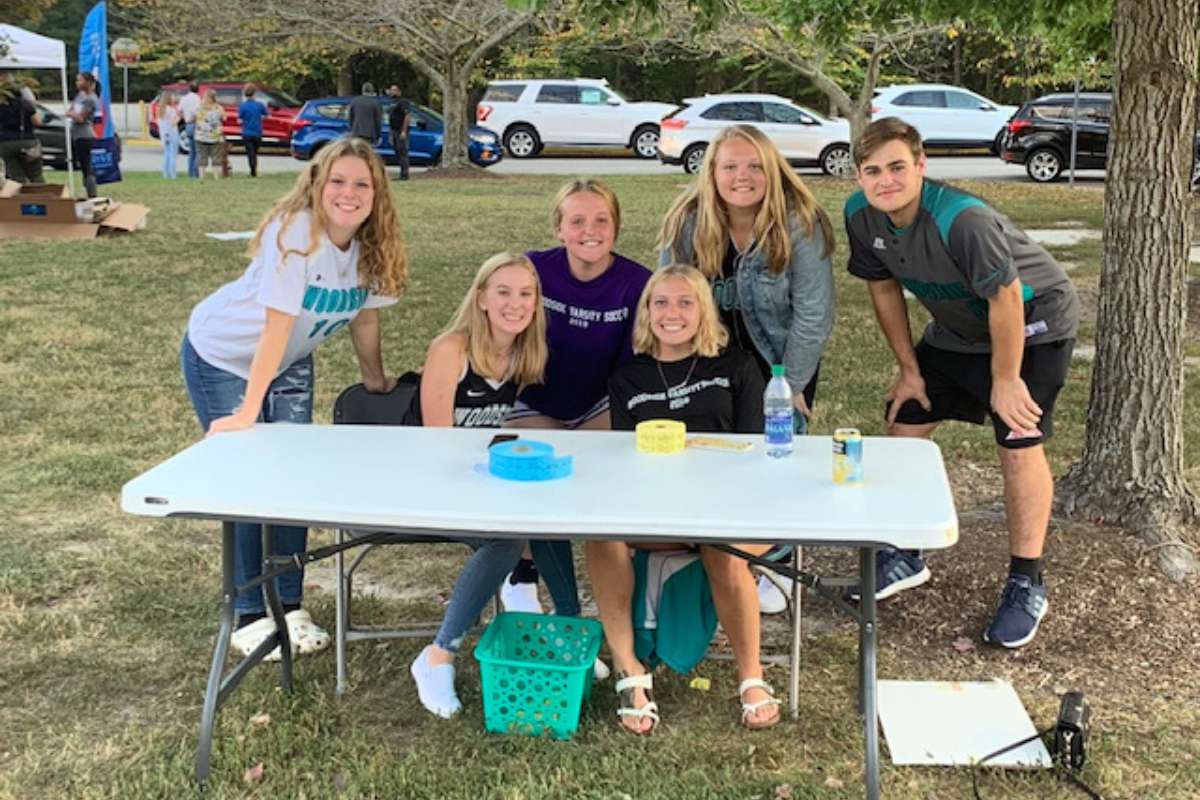
According to the National Alliance for Secondary Education and Transition, youth leadership is the process that schools use to prepare young people for the challenges of adolescence to achieve his or her potential. This is done by promoting activities and experiences that help youth develop social, ethical, and cognitive competencies. In the same way, Pittman, Irby, Tolman, Yohalem, and Ferber (2005) emphasized that schools must be committed to youth leadership and engagement by creating approaches and opportunities which affirm the things that young people can do and increase participation through choice and voice. Furthermore, Hamilton, Hamilton, and Pittman (2004) believed that it is essential for schools to promote youth leadership with an enduring, overarching purpose not as a primary goal to be achieved.
I recently had a conversation with Mr. Shavar Bland, Coordinator of Youth Programs for the city of Newport News, Virginia, regarding the importance of providing leadership experiences to young people. In the end, we both concluded that leadership opportunities have the potential to make a positive impact on the social and emotional development of young people. I left this conversation in deep thought about the concept of youth leadership and the essential role it plays in a school.
In my role as an Assistant Principal at Woodside High School, one of my duties involves overseeing youth leadership and providing students the opportunity to grow and develop as leaders, therefore I created the Woodside High School Athletic Leadership Program which is designed to afford student athletes the opportunity to give back to both the school and community at large, and make an impact which reaches beyond the athletic fields.
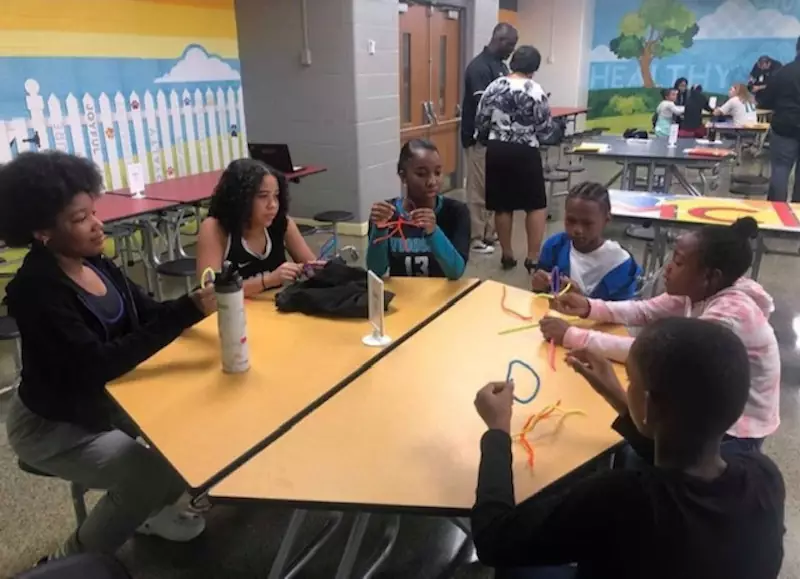
Woodside Athletic Leadership Program: An Exemplar Model of Youth Leadership
Woodside Athletic Leadership is a service-oriented program comprised of thirty-five female and male students-athletes representing girl’s and boys’ basketball, football, girl’s and boys’ soccer, cheerleading, and track and field. Members of the program have two unique qualities: 1) a proven track record of student leadership service ranging from participation in Student Government, Principal Advisory Group, Superintendents Advisory Group on Education, to a plethora of school-wide clubs and organizations. 2) desire and determination to make a difference in the community. Having a core of dedicated and talented student leaders to help actualize the 4 Core Values of the program:
1) Academics First
2) Be a positive community contributor
3) Commit to Ubuntu (Humanity Towards Others)
4) Serve with passion and purpose
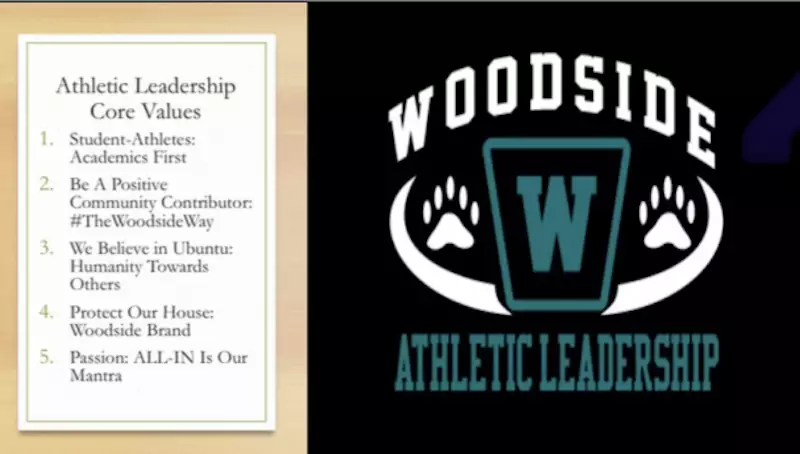
The outcomes of the service that Athletic Leadership has been noteworthy, community service activities such as: tutoring elementary school students, volunteering at local shelters, mentoring middle school students, sponsoring local families during Thanksgiving and Christmas, assisting with ninth grade retention seminars, organizing schoolwide attendance initiatives, planning athletic recognition programs, hosting student mental health awareness workshops, and helping to support a plethora schoolwide academic and youth development initiatives.
One of the major program highlights took place in the Fall of 2019 with the student-athletes hosted “Wolverine for a Day”. This community service activity involved the providing 40 elementary students from the one of the cluster schools with the opportunity spend the day at Woodside. The students participated in activities such as: sitting in high school classes, participating in lessons taught Arts and Communications magnet students, meeting the Woodside Principal, and eating lunch in the cafeteria. The overall experience was described by Jordan Moody, President, Athletic Leadership describe the experience as, “one of the most impactful things that I have ever been a part of. Giving these students many, of which live in my neighborhood, the opportunity to be a “Wolverine for a Day” will forever change their lives!” Additionally, Elementary Cluster Principal Ethel Francis stated, “all of my students enjoyed the Wolverine for a Day program and have committed to improving both academically and behaviorally as a result of this program… they were able to see the wonders of high school and eagerly wait to attend Woodside in the future.”
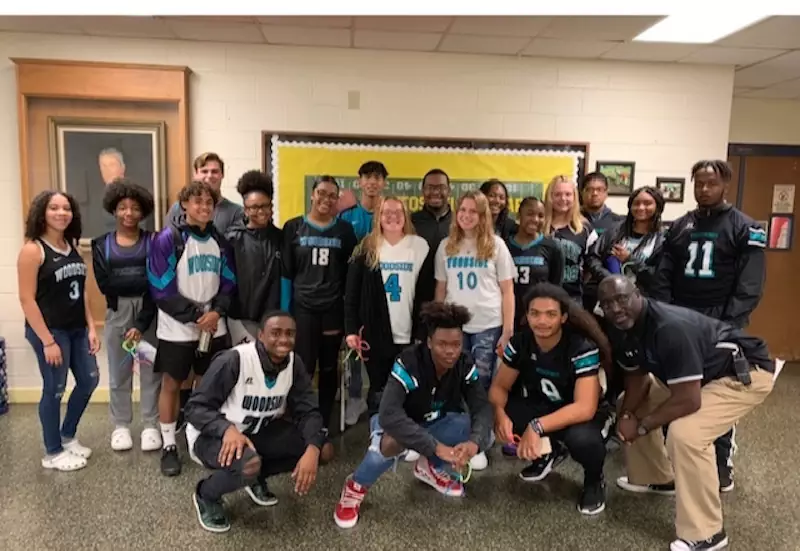
4 Practical Best Practices in Creating a Student Leadership Program
Actively Recruit Student Talent
There are so many talented young people walking the halls and it is important recruit and engage the young people. Listed below are three things to identify when recruiting student leaders:
1) Do you believe that the student has leadership qualities?
2) Does the student have a passion for the school community? Have you observed that he/she display school pride and admiration for the school community?
3) Is the student well respected by peers and faculty and staff?
4) Does the student have a strong academic record?
5) Would they be a good representative of the organizations brand?
These are five “look-fors” provide school leaders the opportunity to recruit a cohort of student -athletes that have the ability to make a positive impact on the school community and expose them to the practical experiences of leadership and leadership development.
Intentional Focus of Servant Leadership
It is important to take an intentional approach to teaching student leaders about the core ideals and principals of servant leadership. These leadership lessons must serve as the corner stone of youth programs because they teach young people that influence rest in putting the needs of the community before their own. As well, principles such as listening, empathy, stewardship, commitment to the growth of others, and building community are the core characteristics that must be developed in order to be an effective leader. As school leaders, it is the moral imperative that we teach and mentor student leaders that it is their responsibility to inspire others to dream.
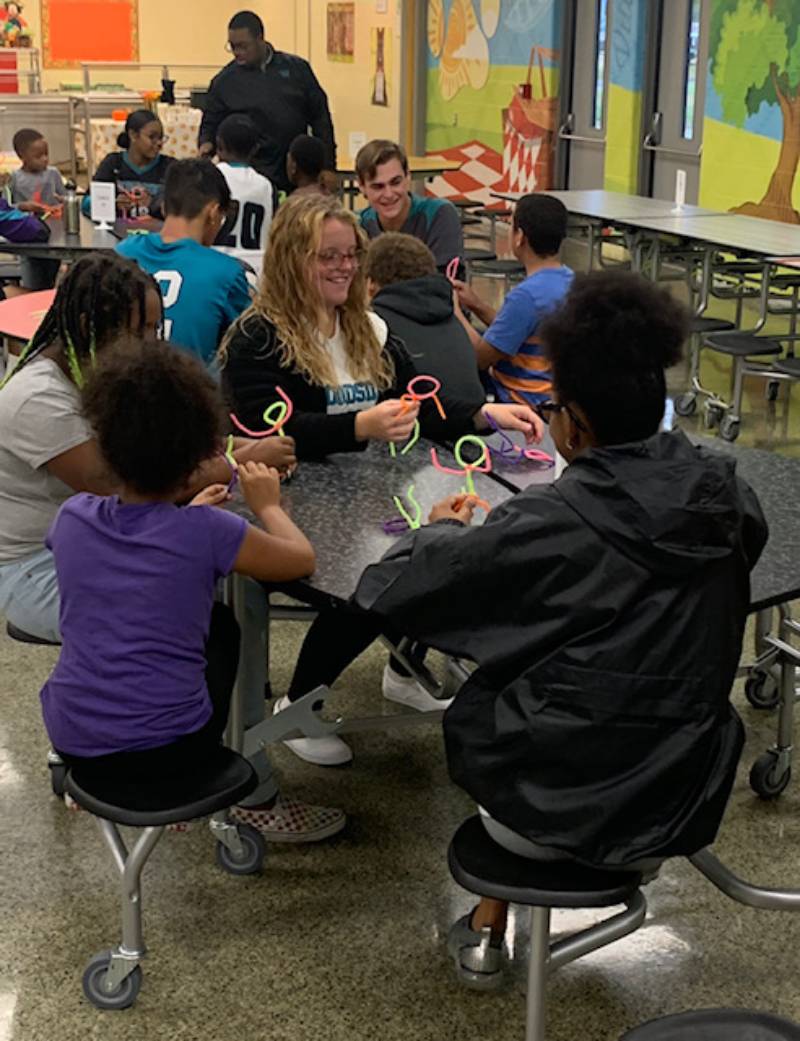
Activate Student Voice
Empowering students to lead with their “why” by working collaboratively with other school leaders to implement programs and initiatives that can benefit the school community and community at large. The power of providing a space for student leaders to share their voice helps to foster their expression and expertise to assist with cultivating the school environment along with developing personal learning and growth. Ultimately, letting young leaders lead with their passion allows them to shine and further develop a leadership identity and philosophy. This ensures that as educational leaders, we are setting them on the path to be college, career, and citizen ready.
Be the Example
As a mentor of young leaders, do not underestimate the power of this role. You are the leadership example, the person whose behavior, mannerisms, and confidence provide the exemplar for your student leaders. Don’t be afraid to walk in this purpose. In the words of the legendary coach John Wooden who was often quoted as saying, “Being a role model is the most powerful form of educating.”
In sum, having the opportunity to work with an exceptional group of young leaders at Woodside High School has been one of the most fulfilling experiences as an educator. Being able to support the leadership growth and development of these students has further strengthen my belief that youth leadership programs are an excellent platform to encourage team building activities, emphasize perseverance, build servant leadership skills, and hone decision-making abilities. As I reflect on the work that Woodside Athletic Leadership Program will undertake this school year, we are ready to make a positive impact on the community and actualize our mantra of “We Are All-In for The Community…The Woodside Way”.
This article is available and can be accessed in Spanish here.
Hamilton, S., Hamilton, M.A., Pittman, K. (2004). The youth development handbook: Coming of age in American communities. (3-22). Thousand Oaks: Sage Publications, Inc
Pittman, K., Irby, M., Tolman, J., Yohalem, N., & Ferber, T. (2003). Preventing Problems, Promoting Development, Encouraging Engagement: Competing Priorities or Inseparable Goals. www.forumfyi.org.







